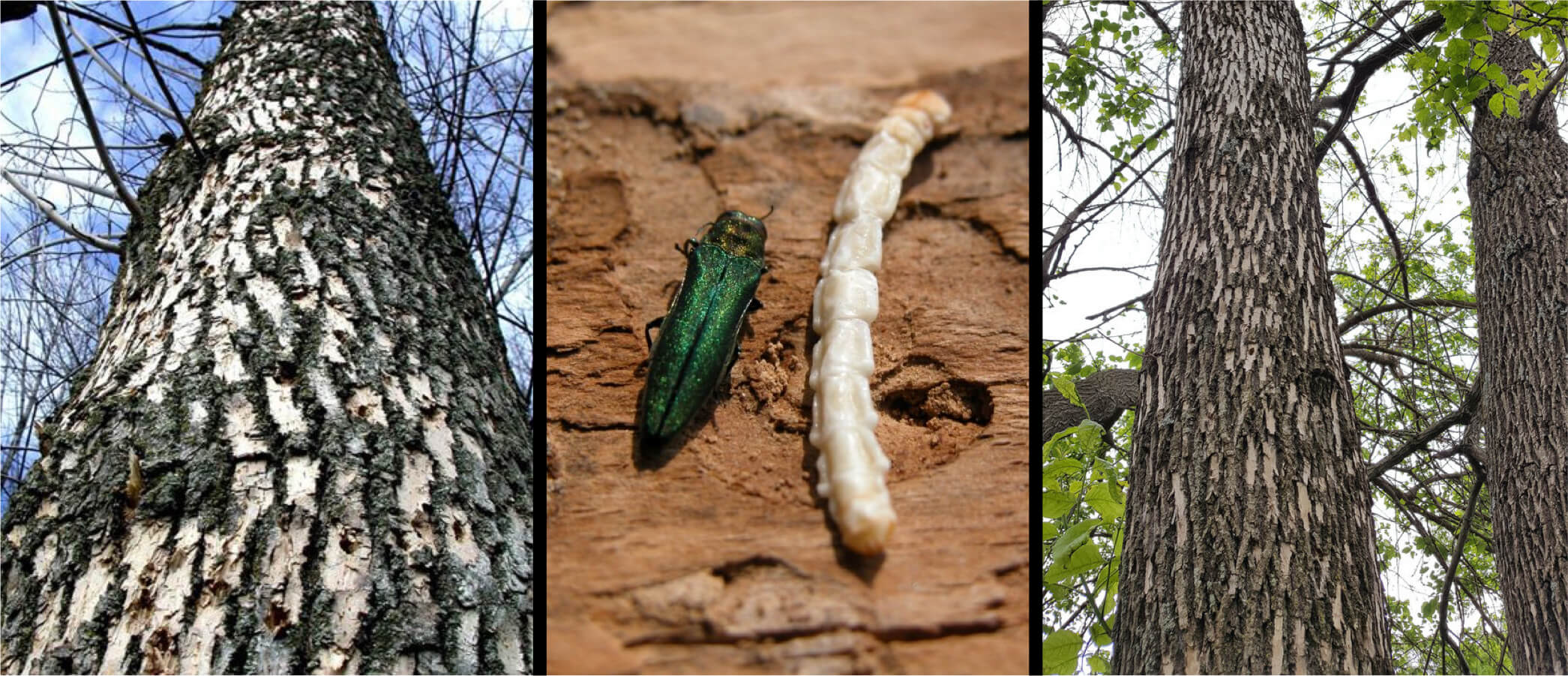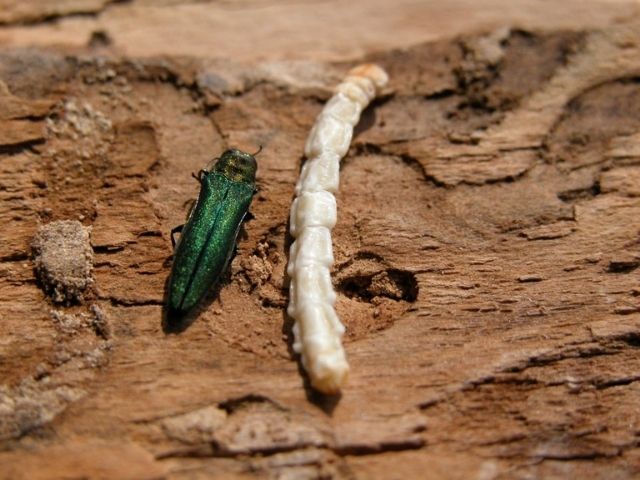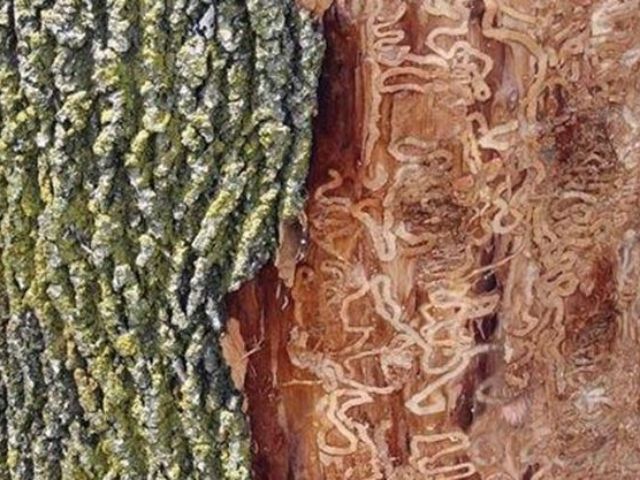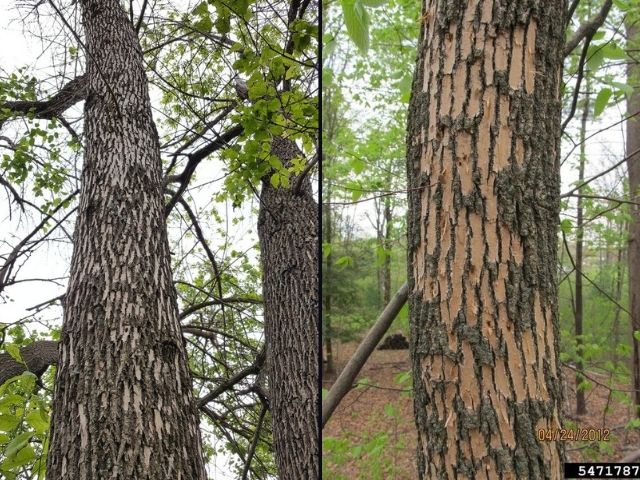
Emerald ash borer damage can also be seen where there are thinning crowns, branch dieback, cracking bark and “D” shaped exit holes as well as yellowing or stunted foliage. Early detection is crucial if the specimen is to be preserved. Where preservation is not an option early removal is encouraged.

Emerald Ash Borer Basics:
The adult Emerald ash borer lays its eggs under ridges and crevices in the bark. The larvae emerge from the eggs and enter the bark to feed on the cambium layer (area beneath the bark that transports fluid and nutrients) thereby destroying the vascular system. The larvae overwinter beneath the bark until their transformation from larvae to adult is complete.The adult emerges in early summer. After feeding on the foliage, the adults mate and the female finds another host tree to lay her eggs and the cycle begins again.Emerald Ash Borer Damage:
The larvae leave serpentine galleries throughout the cambium and sap wood as they feed, effectively destroying the vascular system.


Further Signs:
Emerald ash borer damage is evident here by the removal of the bark by woodpeckers trying to access the larvae beneath. This is indicative of a specimen that is in advanced decline.
